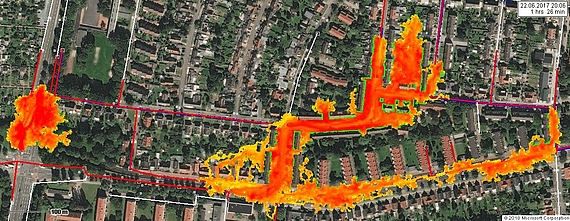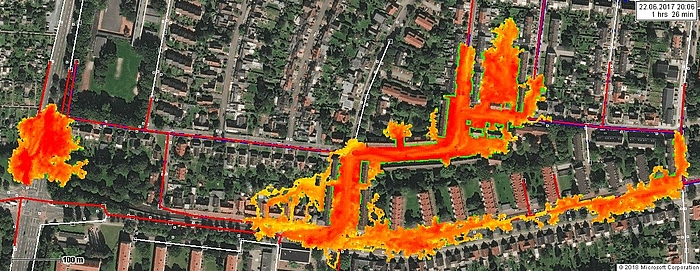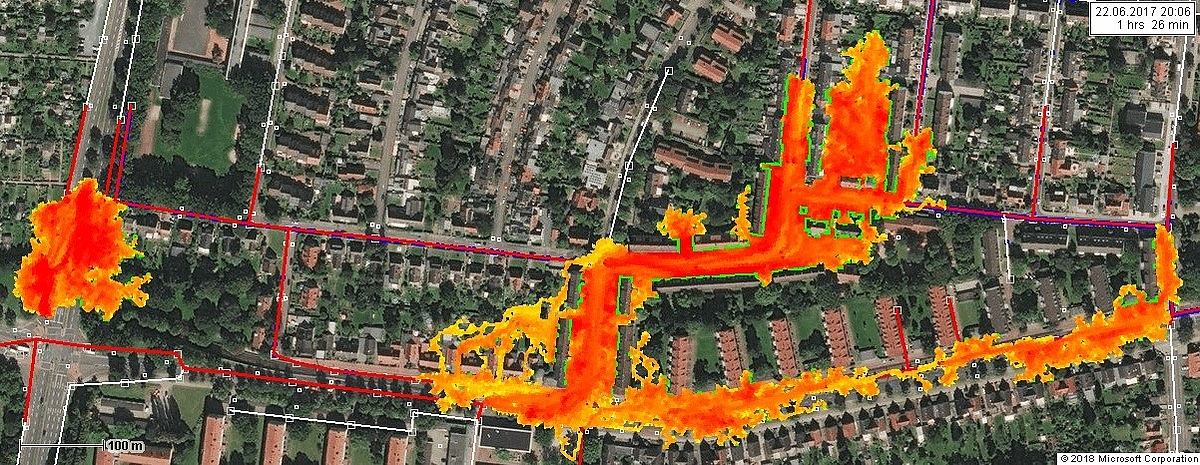


M.Sc. Aaron Peche, M.Sc. Robert Sämann, M.Sc. Simon Berkhahn, Prof. Dr. Insa Neuweiler, Prof. Dr. Thomas Graf
Extreme rain events represent a major threat in modern towns and cities due to flooding and contaminant transport. Subsequent damage on buildings and infrastructure (such as the drainage network) as well as the corresponding contamination may lead to significant economic losses and to extensive social and environmental impacts.
A major challenge in understanding causes and impacts of urban flood events is the complexity of the urban flow system, which consists of interconnected surface runoff, drainage network load and subsurface flow components. Especially the interdependency within the system complicates a reliable prediction of flooding and contaminant spreading and the subsequent implementation of effective protective measures.
Within this project, the OpenGeoSys finite-element code and HYSTEM-EXTRAN, a coupled surface flow and sewer pipe linear network model, are used for the development of a fully coupled urban flow model integrating flow on the surface, in the drainage network and in the subsurface. Main goal is the generation of a reliable tool for the prediction and quantification of urban flooding. Further focus lies on the comprehensive understanding of relevant processes and responses of the urban flow system. The model is based on the urban catchment of Ricklingen, Hannover, and will later be applied to the entire urban area of Hannover.